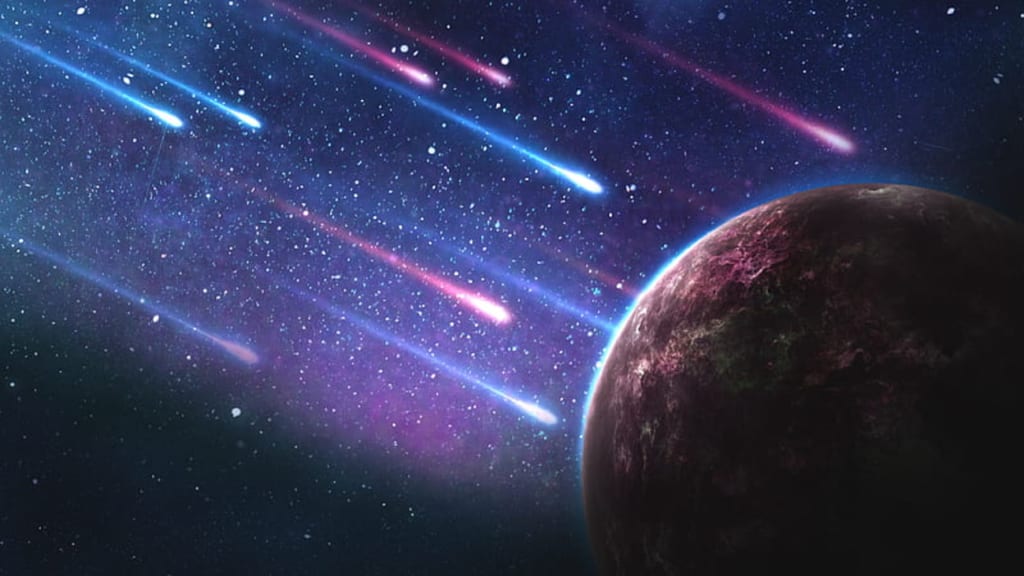
The birth and death of galaxies, nuclear fusion, and the forces of gravity are all part of the epic drama that is the history of stars, which spans billions of years. Now let's go out on this intergalactic adventure.
Birth in Nebulae: Nebulae are enormous clouds of gas and dust where stars are born. Massive areas of space called nebulae are formed when gas and dust are drawn together by gravity to form dense pockets known as molecular clouds.
Protostars: Higher density areas inside these molecular clouds start to collapse due to internal gravity. A protostar is formed when the gas and dust collapse into a compact core. As more material accumulates on the protostar over time, it becomes denser and hotter.
Nuclear Fusion Ignition: Nuclear fusion occurs when a protostar's core reaches temperatures of millions of degrees Celsius. Massive amounts of energy are released as hydrogen atoms in the core combine to generate helium. A stable star is created when this energy opposes the pull of gravity and stops the star from falling any further.
Main Sequence: The bulk of stars, including our Sun, exist in a stable phase called the main sequence during the majority of their lifespan. In this stage, the inward pull of gravity and the outward pressure produced by nuclear fusion are kept in a precarious balance.
Death and Evolution: A star's course is mostly determined by its mass. Stars with a mass of low to medium, such as our Sun, will ultimately run out of hydrogen fuel. The star's outer layers expand and turn into a red giant as the core contracts and heats up. In this stage, the star's core undergoes fusion reactions to produce heavier elements.
Supernovae and Stellar Remnants: The deaths of high-mass stars, or stars that are several times as massive as the Sun, are far more dramatic. They burst under the force of their own gravity after using up all of their nuclear fuel, producing the devastating explosion known as a supernova. The interstellar medium is enhanced by the heavy components that are released into space by this explosion. The mass of the star determines what is left over after a supernova. It could turn into a pulsar, a neutron star, or, in the case of very massive stars, a black hole.
Stellar Nurseries: Stars constantly add heavier components to their surroundings as they go through this cycle of birth and death. In large stellar nurseries within galaxies, supernova remnants and stellar winds aid in the development of new generations of stars and planets.
Galactic Dynamics: Stars are not isolated objects; rather, they are a component of wider galactic systems. Through their interactions with one another, they can form clusters or even binaries.
The Unending Cycle: The stars' tale is one of perpetual birth, life, and death that adds to the universe's constant evolution. New stars are created from the ashes of old ones, continuing the cosmic story for billions of years to come.
The tale of the stars is essentially one of cosmic drama, in which powerful forces weave the universe's fabric together to produce the wonder and splendor that permeate the night sky.
Comets are amazing celestial bodies that have captured people's attention for ages. Here is a summary of comets and their importance:
1. Composition: The main constituents of comets include ice, dust, stony debris, and organic substances. The heat from the Sun causes the ice to evaporate as they get closer, encircling the comet's nucleus with a luminous coma made of gas and dust.
2. Orbits: Comets usually have extremely eccentric orbits, which can carry them from the farthest reaches of the solar system to quite near the Sun, in contrast to planets. They can have long-period orbits, which round the Sun over thousands to millions of years, or short-period orbits, which finish in less than 200 years.
3. Nucleus: A comet's solid, central core is known as its nucleus. Its diameter is usually a few kilometers, making it relatively small. The comet's stony and ice components are contained within. The comet's nucleus is the sole component that is solid and does not break up while it flies through space.
4. Coma and Tail: As a comet gets closer to the Sun, solar radiation vaporizes the volatile components in its nucleus, encircling the nucleus in a luminous coma. This material is subsequently blown away from the Sun by the solar wind, creating a distinctive tail that faces away from the Sun as a result of both the solar wind and radiation pressure.
5. Origin: Comets are thought to be leftovers from the solar system's early phases, which dated back more than 4.6 billion years. It is believed that they originated in the solar system's outermost regions, where the temperature was low enough to keep volatile substances like water, ammonia, and methane frozen.
6. Observation: Throughout history, civilizations have observed and documented comets. They can evoke wonder and perhaps terror when they appear as "hairy stars" with lengthy tails. Notable comets include Comet Hale-Bopp, which made a stunning appearance in 1997, and Halley's Comet, which has a short orbit and returns to the inner solar system around every 76 years.
7. Scientific Significance: Research on comets sheds light on the circumstances and make-up of the early solar system. Scientists can discover information about the primordial components from which the planets formed by examining the gases and dust expelled by comets.
8. Space missions: Numerous space missions, such as NASA's Stardust, Deep Impact, and Rosetta missions as well as the European Space Agency's (ESA) Rosetta mission, which successfully landed a probe on a comet's surface, have been launched to investigate comets up close.
In conclusion, comets are old, mysterious objects that provide insight into the early history of the solar system. Their amazing appearances and fascinating scientific secrets never cease to amaze scientists and astrologers alike.






Comments
There are no comments for this story
Be the first to respond and start the conversation.